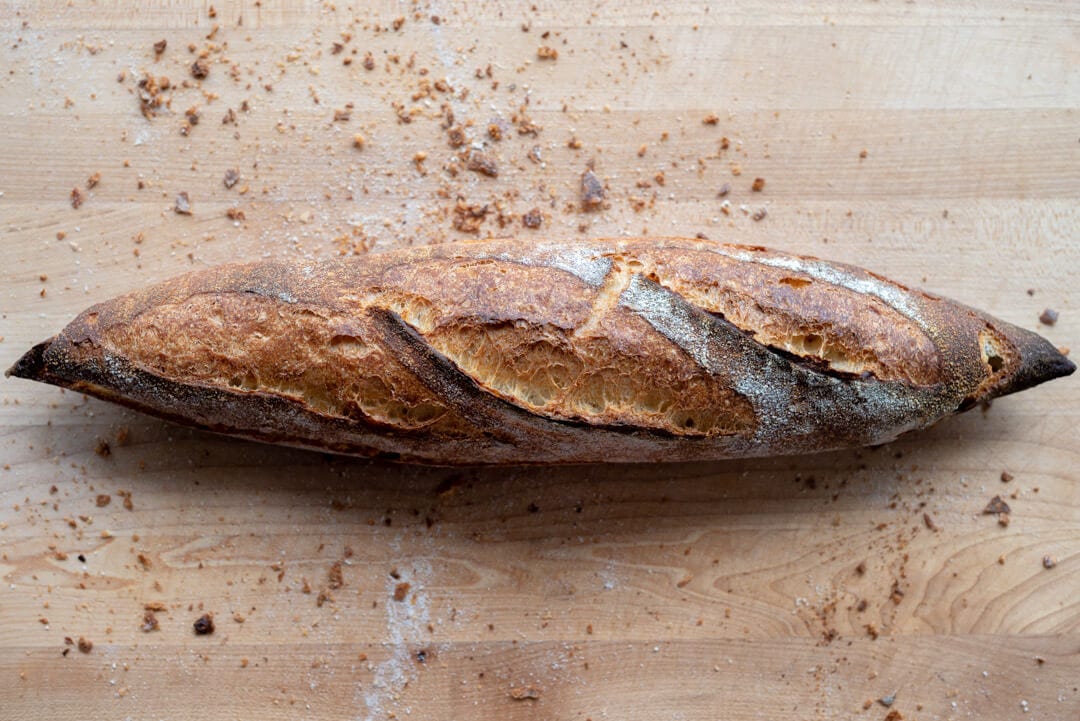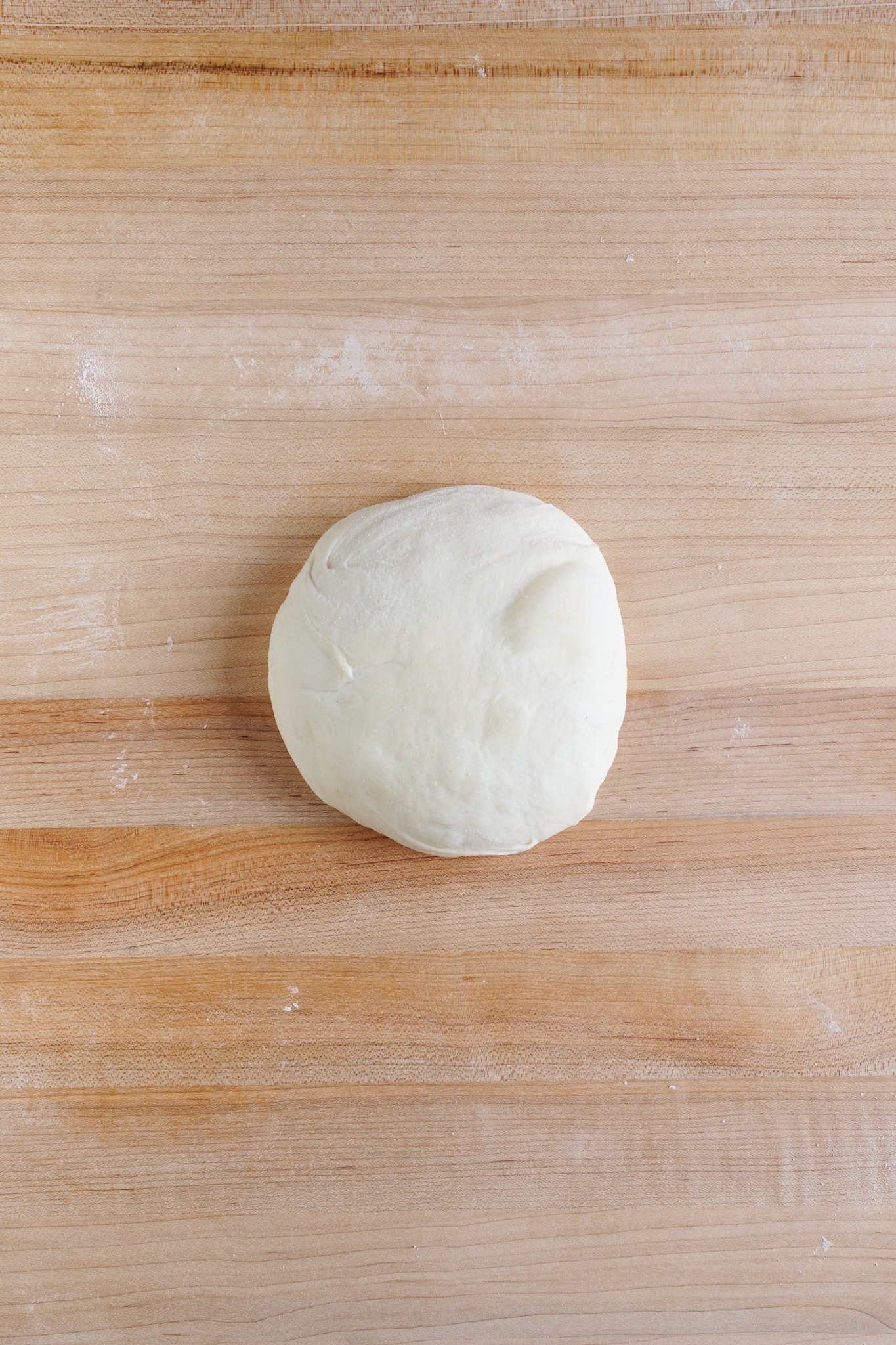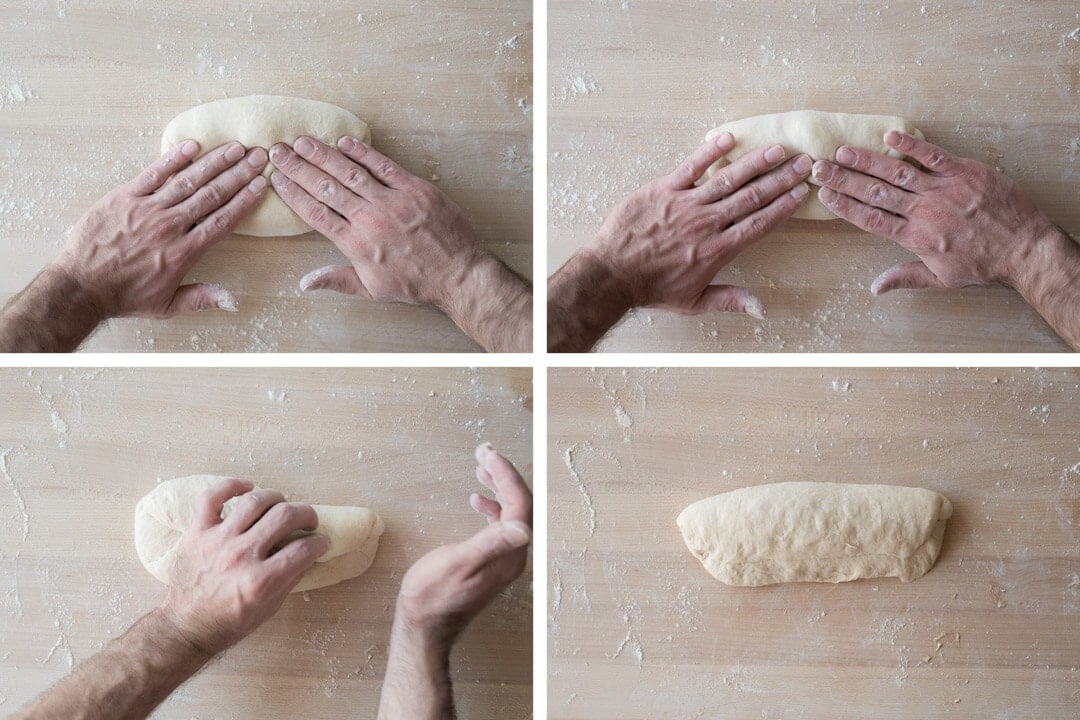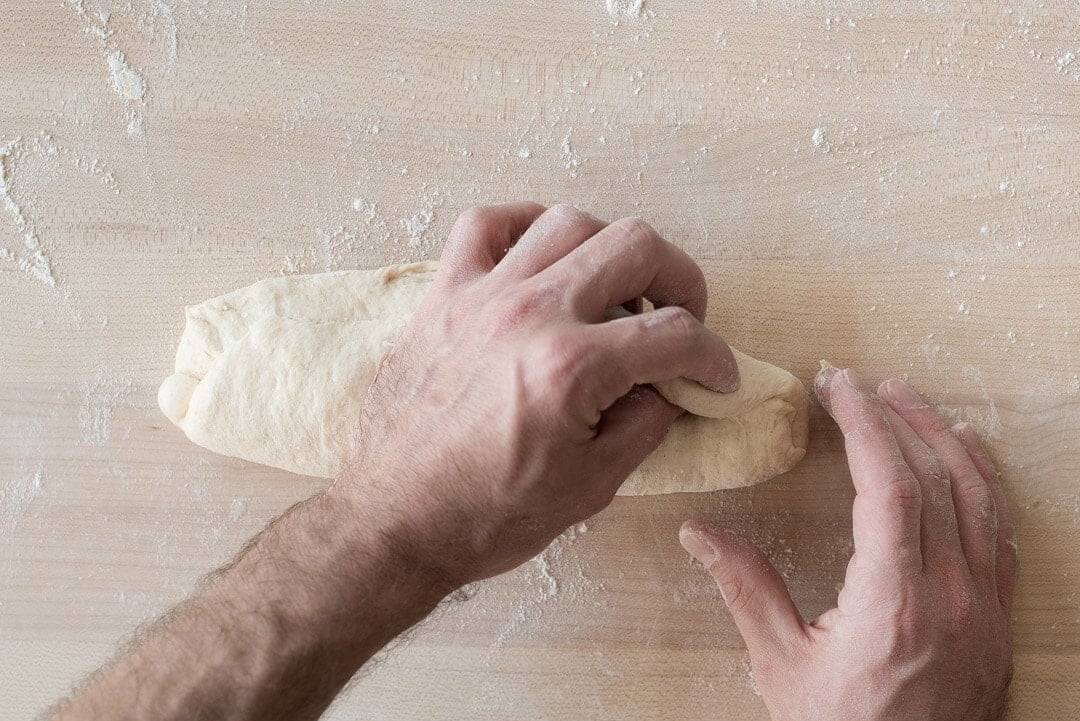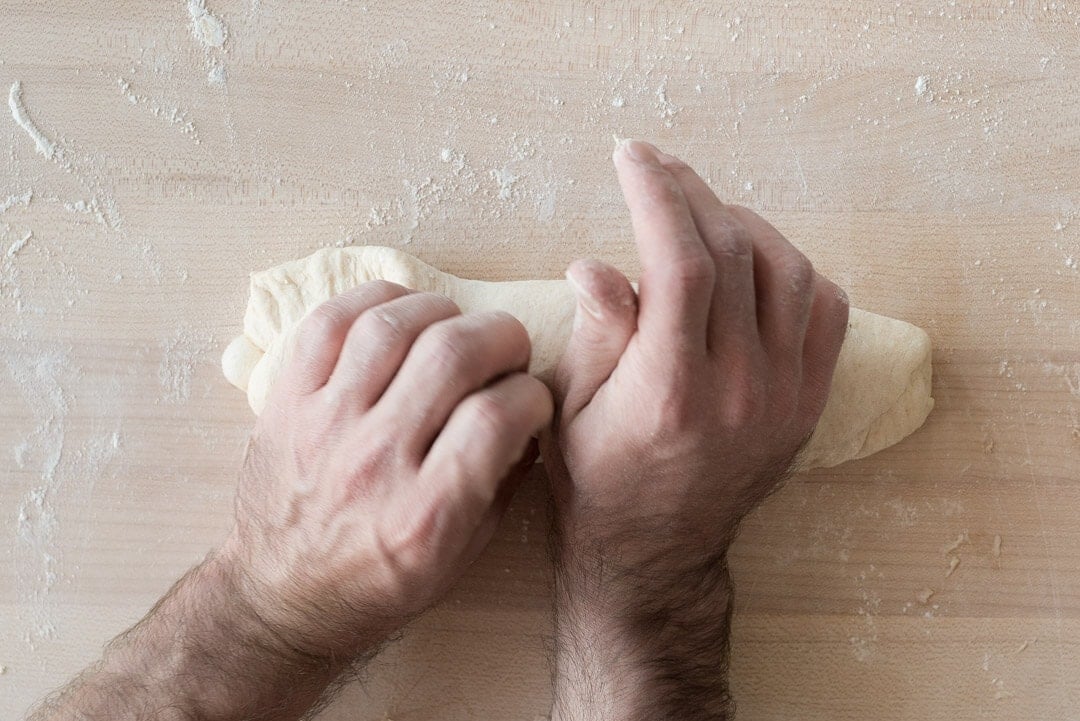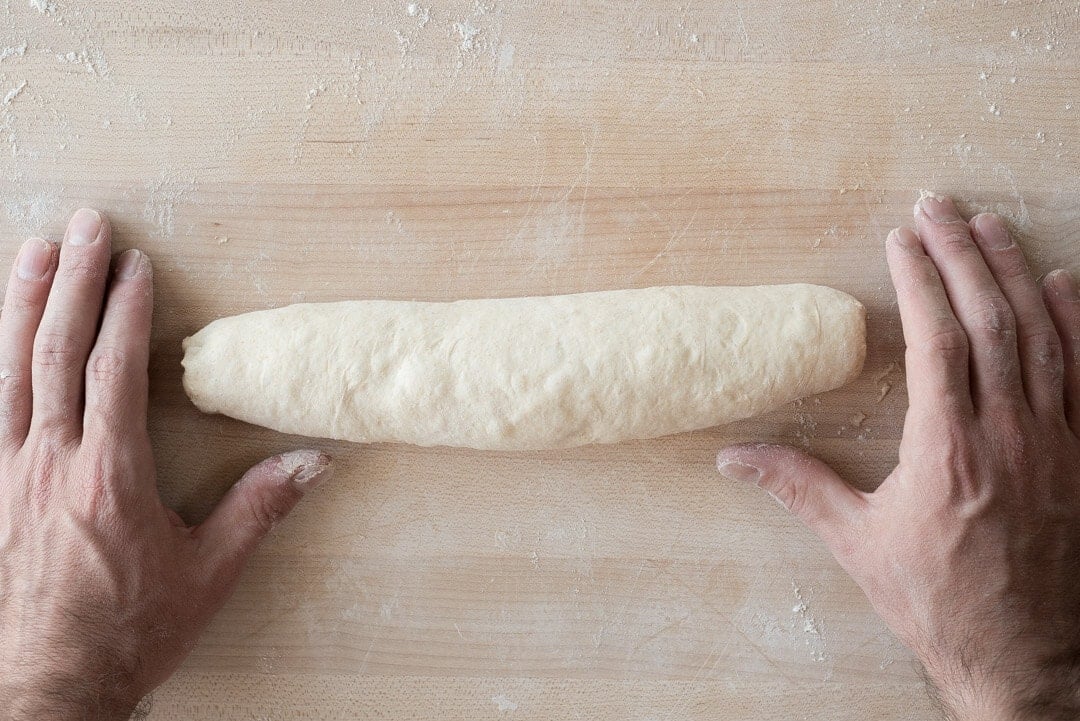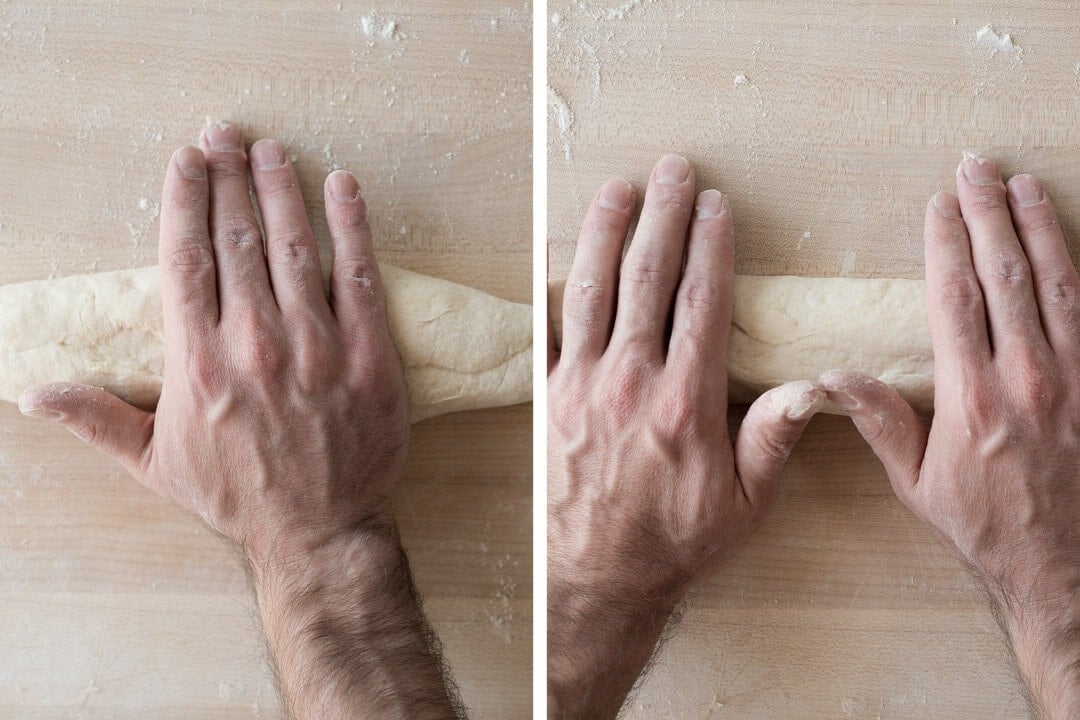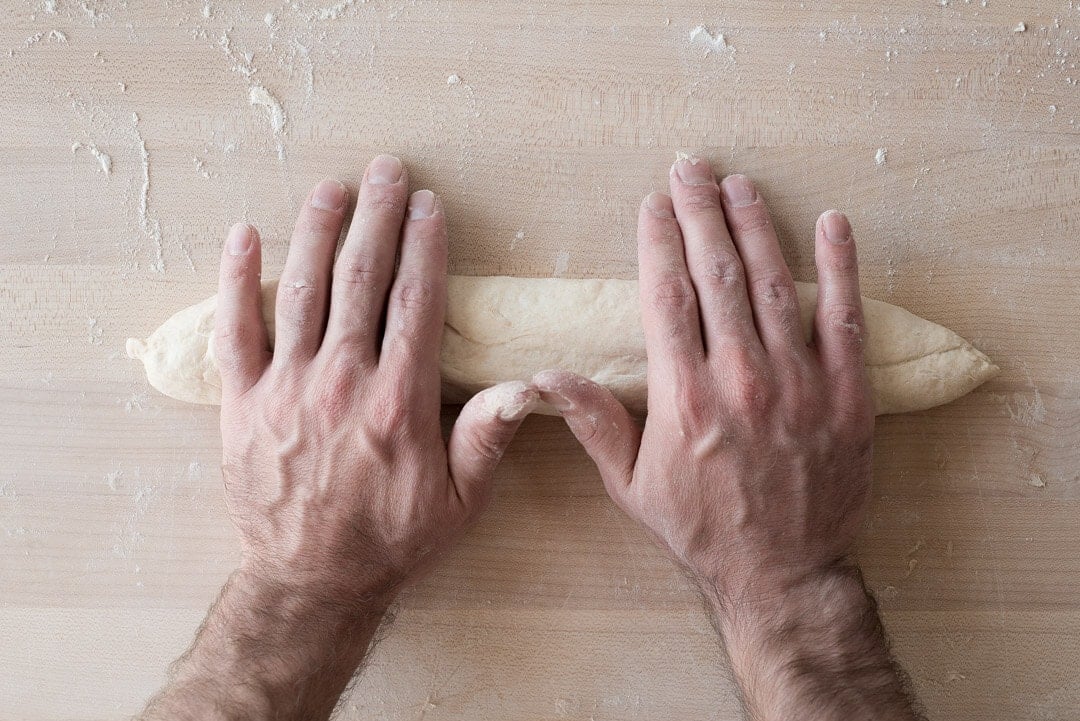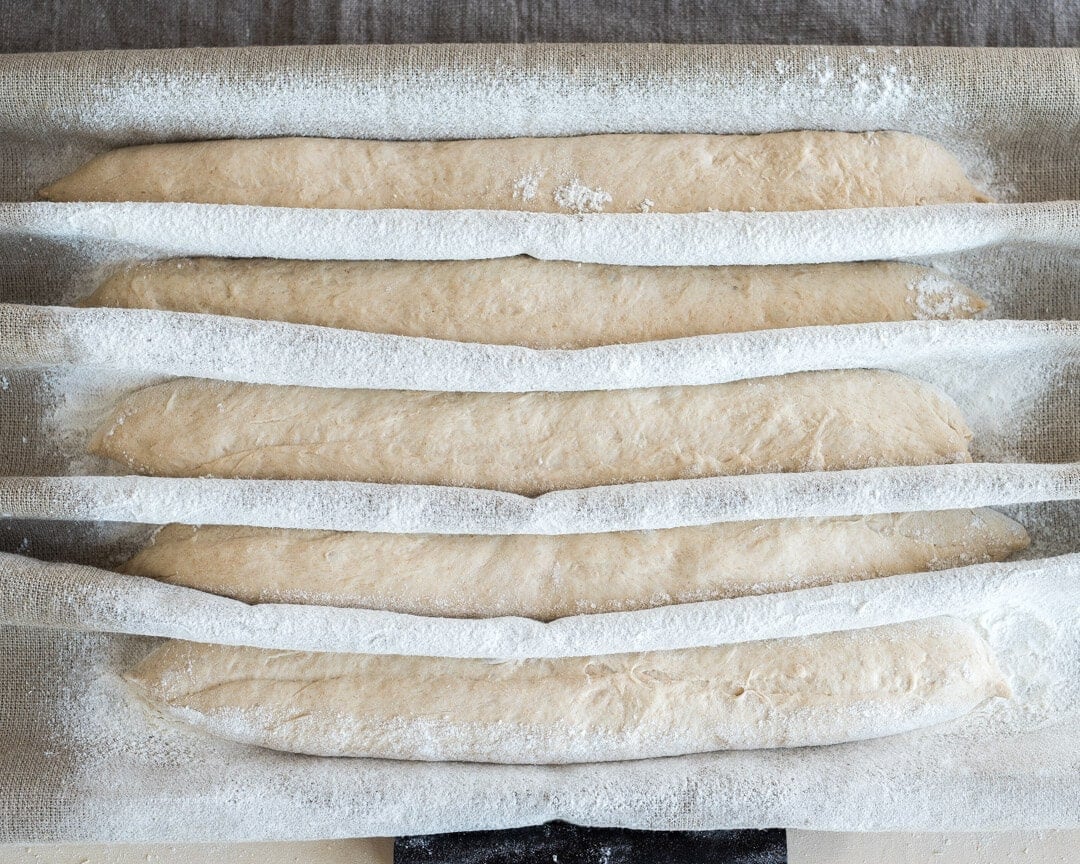Baguettes are one of the best-known types of bread. On the surface, they seem very simple—they’re just a long, thin loaf, or a “pointy stick,” as I sometimes call them—but the truth is, there is incredible depth and nuance not only in how to shape baguettes but also in managing fermentation to achieve the best flavor and texture possible.
One of the beautiful things about baguettes, and especially sourdough baguettes, is the fact that they are made from very simple ingredients. Usually, just one type of white flour, salt, water, and either commercial yeast (which is traditional) or, in the case here at The Perfect Loaf, a sourdough starter.
Baguettes are a baker’s true test of commitment to the craft.
However, baguettes are also quite challenging to make, and this is especially true for sourdough baguettes. But I will say this upfront: while they can be challenging, they are 100% worth the effort, and having a freshly baked baguette straight from the oven is an incredible experience.
One demanding part of making baguettes, especially at home, is the shaping of the dough. Because the dough is rolled out to a very thin and tapered cylinder, it can be challenging to ensure the taper is even from tip to top. However, as with everything when making bread, with practice, even this becomes easier.
What is a Baguette?
A baguette is a thin, long loaf of bread with an extremely thin crust and soft, open interior. It is a staple bread in France (but also in many areas worldwide) and is incredibly versatile. Baguettes are used as an accompaniment to daily meals, to make sandwiches, and just about everything in between. Traditionally, baguettes have a very mild flavor profile, are yeasted, and are made with all-white flour with a moderate protein percentage to ensure the interior is very tender.
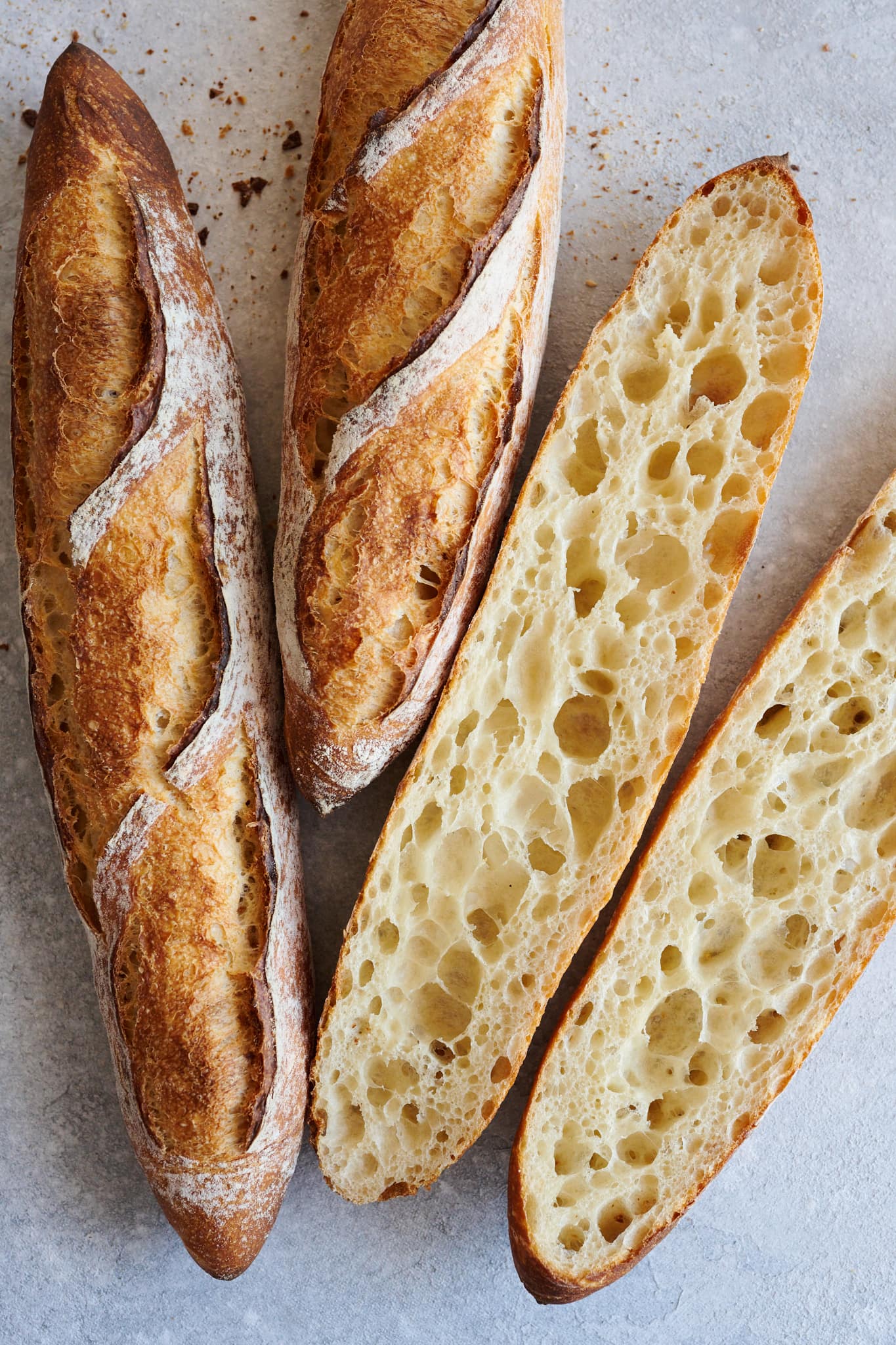
The Importance of Preshaping Baguette Dough
Before shaping baguette dough, let’s first talk about the importance of preshaping. Full-stop, preshaping sets the stage for successful shaping with any dough, but it’s especially important with baguettes. We will discuss preshaping with a dough that’s been fully bulk fermented (the dough’s first rise) and is ready to be divided.
There are several ways to preshape baguette dough. The first is to divide the dough, scale it to the weight for the size of the baguette you’re making, then preshape it into a very gentle rectangle. This preshape is gentle, and I find it best used when you’re also shaping baguettes very gently (perhaps by simply rolling and tucking it down instead of the process I’ll describe soon).
Second, and the way I preshape, is to divide and scale the dough and gently preshape it into a loose round. You’re not looking for a dough that’s super smooth and perfectly round. It’s more about getting it into an even and uniformly thick circle shape.
Continue to divide and preshape each piece of dough in the same way, then let it rest until shaping. But before we shape, we first must prepare a way for our baguette dough to proof.
How Do You Proof Baguettes?
Due to the long, tapered shape of baguette dough and the number of pieces, it is best proofed using a couche (or a clean kitchen towel) heavily dusted with flour to hold it while it rises. A couche provides structure (see below) for many pieces of dough and keeps it in shape but still allows it to puff up as it proofs.
What is a Couche?
A couche is a French word that refers to a heavy linen cloth used to hold shaped dough as it proofs. The cloth is dusted heavily with flour and, because of its rigidity and folding, keeps the dough’s shape while also preventing pieces from sticking together.
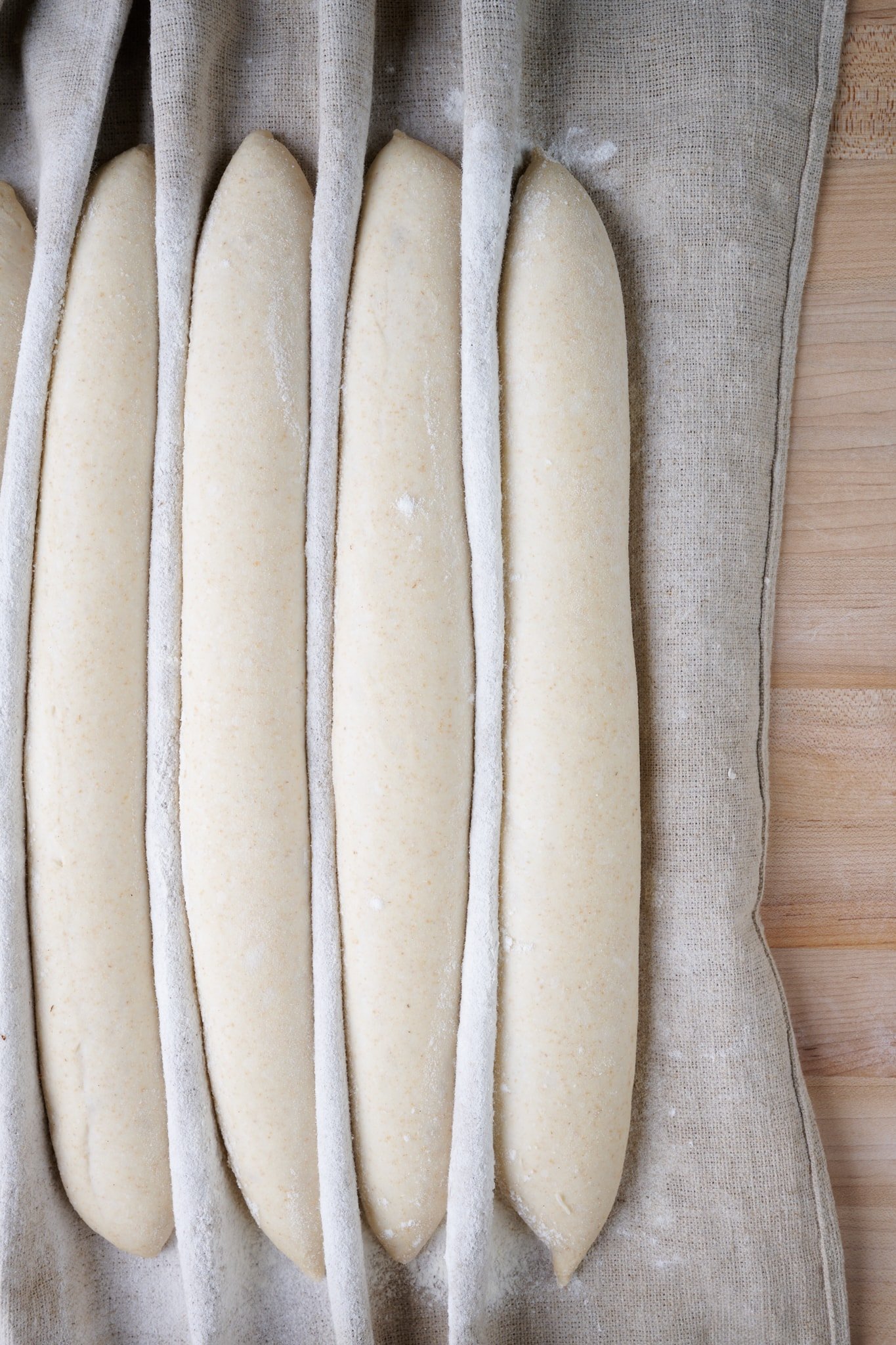
Seen above is my favorite couche, it’s long and wide, but not too large to make it hard to use in the home kitchen. It’s also sturdy and will last your entire lifetime if properly cared for. A couche should never be washed with water, brush out any excess flour and hang to dry.
The great thing about having one or two couche in your kitchen is they can be used for baguettes, yes, but also to proof other dough shapes, like ciabatta.
How To Use a Couch For Proofing Baguettes
Starting at one side of your couche (or kitchen towel), roll up a small edge on the long side. This little rolled edge will be the first “bumper” that holds the first piece of dough (see below). The goal is to create a series of channels to hold each long piece of dough.
Next, dust on some white flour directly next to the bumper all along the couche, where a piece of dough will rest. This will ensure the baguette dough does not stick.
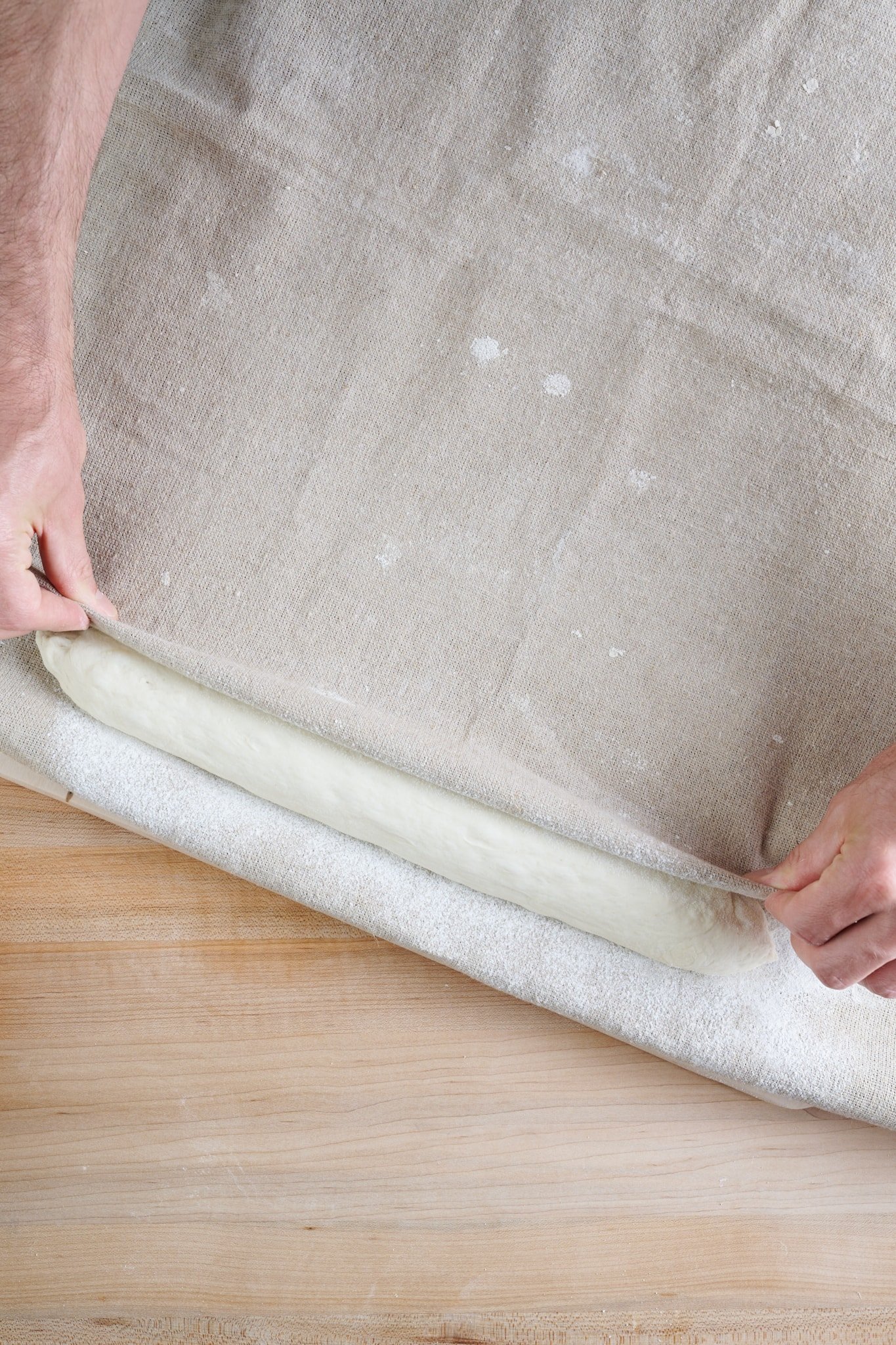
After you shape a piece of dough, lay it into the channel you’ve created that’s dusted with flour. Then, pick up the couch and fold it so it supports the side of the baguette dough. Next, dust the new part of the couche that will be the next channel for a new shaped piece of dough.
Important: After filling the couche with all your pieces of dough, you can cover it with another couche or reusable plastic to keep the dough from drying out during proofing.
Now that we have our couche ready to hold our shaped baguette dough and our dough is preshaped and relaxed, now we can move to shaping.
How to Shape Baguettes
There are many ways to shape baguettes, and each baker has their preference, but I’ve stuck to the method outlined by Jeffrey Hamelman in his seminal book, BREAD. This approach imparts significant structure to the dough and helps keep the shape tight when proofing at room temperature before baking.
The physical length of baguettes will ultimately be determined by the size of your baking surface (baking steel or baking stone). When I make 300-gram baguettes on my Baking Steel, I roll them out to about 14″ in length. Because they’re smaller than traditional baguettes, they’re more like demi-baguettes. Regardless, shaping baguettes, whether smaller or larger, is almost the same, with the only difference being their overall length.
How to Shape Baguettes: Step by Step
There are five key steps when shaping baguettes:
- Starting with a preshaped round (or rectangle), first fold the top half down to the middle and seal (upper left image, below)
- Flip the dough 180° and fold the new top down to the middle again, slightly overlapping the first fold (upper right image, below)
- Using your left-hand place your thumb horizontally with the middle seam and, using your fingers on the left hand, pick up and curl the top edge of the dough up and over your thumb. At each curl, use your right palm to seal this curl to the middle of the dough. Work your way from the right side of the dough to the left. Note that your right hand is only sealing the dough with the palm, it does nothing else (lower left image, below)
- Flip the dough 180° and repeat step 3 above, but this time seal the dough to the bottom firmly against the bench
- Using one hand, roll the dough away and toward your body in the middle, then transition to two hands and roll the dough back and forth as evenly as possible until the desired length is achieved. Note that during this rolling it’s best to keep your fingertips and palms in contact with the bench at all times
Let’s look closer at the sealing and rolling part of this process, which can be tricky. Once you have the dough folded in on each side, you then want to seal it using your palm.
Note that you will always use the same palm to seal the dough (it’s helpful to keep this in mind as you work). For instance, in the images below, you’ll see my left hand is always folding the dough over, and my right palm is always sealing it against the work surface.
Once you have sealed the entire length, you can begin rolling out the cylinder to the desired length (for me, 14″ long). First, use one hand in the middle of the cylinder to start rolling and create the initial starting taper. You want it thicker in the middle and gradually taper to the end. Then, as you’re rolling with one hand, gradually start rolling with two hands and continue back and forth to taper out the tube.
Be sure to keep your fingers and palms in contact with the bench as you roll back and forth. This helps create the consistent taper on each side of the tube.
Push and pull both your hands back and forth as you gently roll the dough out to your desired length. In the end, you’ll have a tube that tapers consistently from the middle to the end. I prefer to make a sharp point at the ends.
Once rolled out, transfer with two hands to a liberally floured couche for their final proof on the counter.
Watch Me Shape a Baguette: Video
How Can I Get a Thinner Crust On My Baguettes?
I find there are three important things to achieving a very thin crust with sourdough baguettes:
- If your dough is placed in the refrigerator at any point, it’s best to do a cold bulk fermentation instead of a cold proof
- Ample steam in the oven when baking
- Baked at a high temperature for a shorter time
Cold Bulk Fermentation
For the most delicate of flavor profile, proofing baguette dough is best one direct, that is, the dough is baked the same day it is mixed. However, I personally prefer a longer fermentation timeline for more depth of flavor and an easier preparation schedule. In this case, the refrigerator can be used to split making baguettes over two days.
If you retard (cold proof) baguettes in shape, you’ll find the resulting baguettes will have a thicker crust. Instead, if you cold bulk ferment, or bulk en bac, and then ambient-proof the dough in shape, you’ll find the crust will be much thinner and very delicate.
Heavily Steam Your Oven When Baking
One of the challenges for home bakers making sourdough baguettes is steaming their home oven. To inject the most amount of steam, I follow my home oven steaming process of using two pans at the bottom, one filled with rolled-up and water-drenched towels and the other with lava rocks (or empty). Once the baguette dough is loaded into the oven, throw ice into the preheated pan with lava rocks and quickly close the oven door.
Bake Baguettes at High Temperature For Less Time
When baking baguettes (even in my RackMaster oven), I prefer to keep the oven at a high temperature and bake them for a shorter period. Usually, I will bake at 450°F (230°C) or sometimes 475°F (245°C). Keep an eye on your baguette dough when doing this because it will quickly color!
Making a Baguette From Start To Finish: Video
Here on Instagram, I show a quick video shaping the baguette dough, using a couche, and scoring.
How to Shape a Baguette FAQs
How long should a baguette be?
For the home baker, a baguette should be only as long as your baking surface; otherwise, you won’t be able to make it! In my home oven, my baguettes are usually 14 inches long. Baguettes in a professional bakery are typically between 25 and 40 inches long.
What is a demi-baguette?
A demi-baguette is simply a shorter baguette.
How pointy should baguettes be?
This is a very subjective question. It all depends on what the baker prefers! I like very pointy baguettes, but some argue that a baguette with ends too pointy reduces the usability of that part of the loaf, and I can see that. Whether you shape the end more bluntly to ensure the entire loaf is usable or more pointy for dramatic flare, it’s up to you!
How long does a baguette last?
Since baguettes have a very thin crust and are long and slender, they stale quickly. Ideally, they are eaten the day they’re baked, and even better shortly after they come out of the oven.
What’s Next?
To learn other bread dough shapes, such as a round boule or oval bâtard, see my guide to shaping bread dough. Or, if you are a new bread baker, my Beginner’s Guide to Sourdough Bread for a look into every step of the process.
If you’re ready to make your own baguettes, check out my sourdough baguette recipe and get baking!


